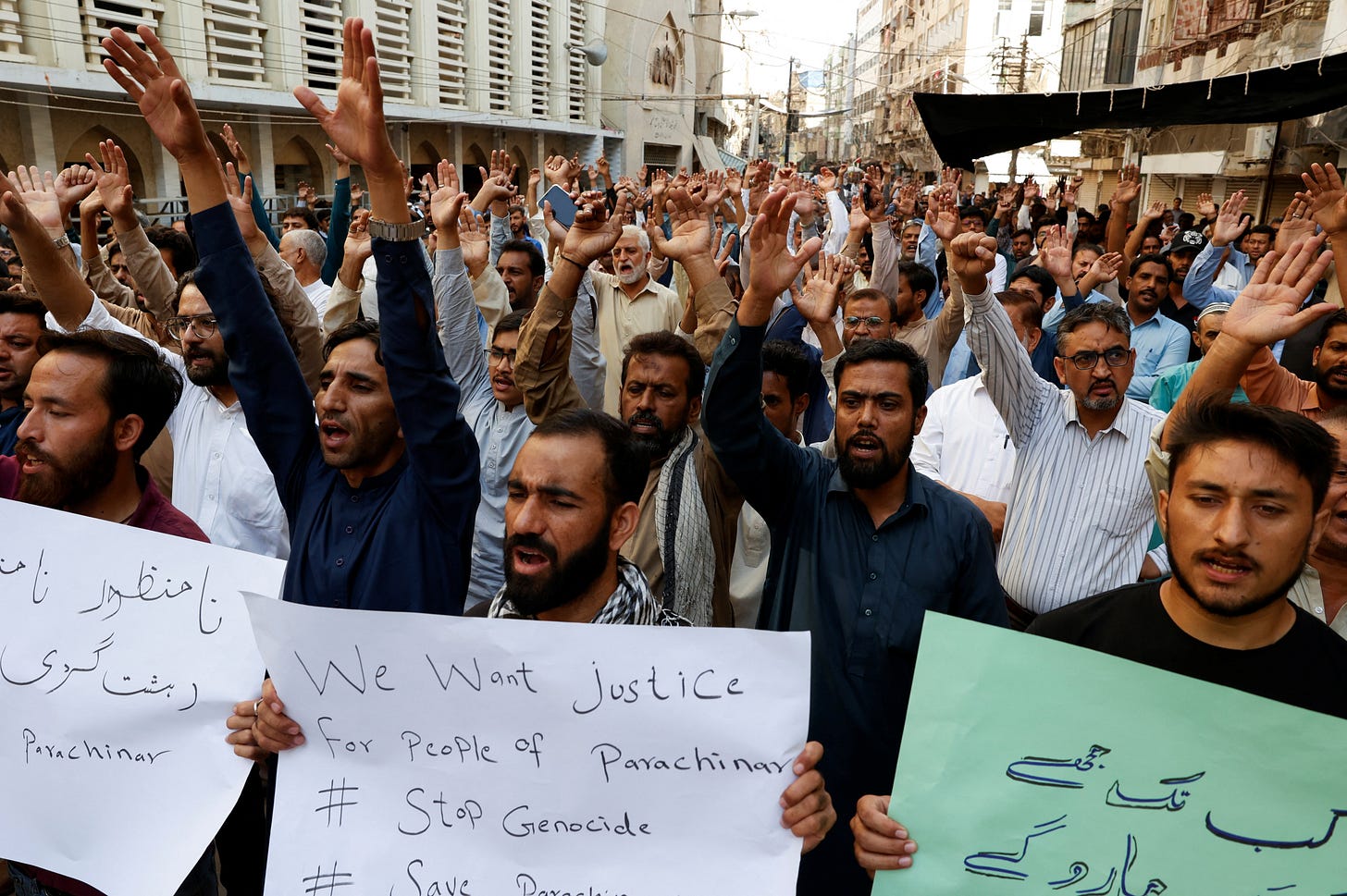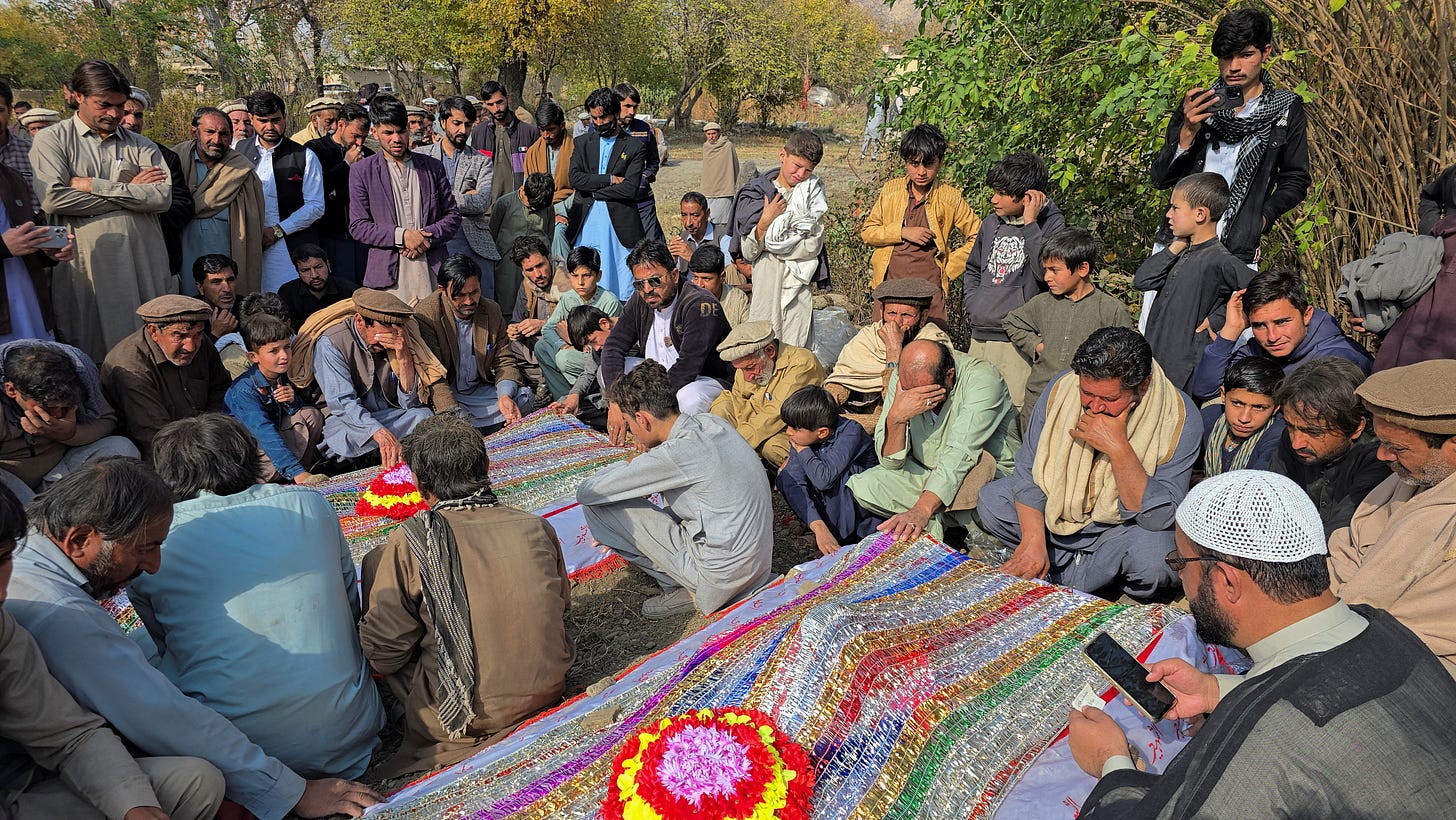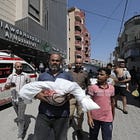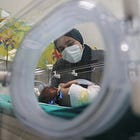Killing Season in Pakistan: Will the Violence Against Shias Ever End?
I have never known a Pakistan without this eerie undercurrent of anti-Shia animus.

It is killing season in Pakistan. For the country’s most vulnerable, it is perpetual, bloody, and passes without redress or justice. For Shias, since 1990, there has been little respite from an open season of violence. Last week, at least 42 Shia pilgrims, including six women and children, who were traveling in the northern town of Parachinar, the capital of Kurram district, were killed when their convoys came under heavy gunfire. They had been traveling with police escorts, so blatant and longstanding is the threat to Shias in Pakistan. More than 20 people were wounded, and another 26 Shia pilgrims were abducted by the unknown militants – no one has claimed responsibility. Clashes between rival groups erupted in the days after the ambush. At least 88 people have been killed since the latest outbreak of violence began, according to local authorities.
In my lifetime, Pakistan has undergone military coups, frequent terror attacks, targeted killings, and the ugly persecution of minorities. Yet there is always something chilling about the violence directed at Shias – I never cease to be shocked by the scale, the precision, and the ease with which countless civilians can be identified, hounded, and murdered.
This gruesome attack was not a surprise, it did not come out of the blue. This summer, a spate of violence between Shias and Sunni tribesmen in the area saw at least 50 people killed – the majority Shia – and a further 200 wounded. In early November, a peace march was held in Kurram district – whose 800,000 residents are approximately 45% Shia – where protesters demanded more security from a state that seems largely unconcerned by the constant violence. No new security measures were taken, and the concerns of Parachinar’s hunted and persecuted Shias fell on cold, uninterested ears.

A worldwide minority among Muslims, Shias make up 15% of Pakistan’s population. The Global Centre for Responsibility to Protect has called them “the focus of most sectarian violence” in Pakistan, more vulnerable than our tiny population of Hindus and Christians. For as long as I can remember, Shias have been the target of a persistent, determined violence. I was 12 years old the first time I was asked at school in Karachi whether I was Sunni or Shia. I had grown up in Syria, returning to Pakistan only in the sixth grade. I had no idea I could be anything other than just Muslim, no one had ever asked me the question before. Until that point, I hadn’t realized you had to declare yourself one or the other. “You’re Shia,” the boy concluded. “All your family are. You all have Shia names.” I have never known a Pakistan without this eerie undercurrent of anti-Shia animus. Though there certainly was a time when Shias and Sunnis existed in relative harmony, it was before my generation of Pakistanis was born.
Sectarian Violence: A Brief History
The 1990s saw a campaign of terror unleashed against prominent Shias. Imam Bargahs and mosques were routinely hit by bombs and machine gunfire. And dozens of Shia doctors were reportedly assassinated in the early 2000s. Ethnic Hazaras, who are also Shia, have been singled out and killed for decades. At least 180 Hazaras were killed in bomb attacks in the first two months of 2013, and gunmen in Mach, Balochistan, murdered 11 Hazara coal miners in 2021, an attack so heinous that vigils for the dead were held across the province. More than 4,000 people – the majority Shia – are thought to have been killed in sectarian violence between 1987 and 2007. Thousands of Shias are estimated to have been killed between 2008 and 2014 in violence connected to the war on terror, according to Human Rights Watch.
The animosity towards Shias is not unique to Pakistan’s Sunni majority and stretches back to the succession of Islamic leadership after the death of the Prophet (peace be upon him). In Pakistan, there are many geopolitical and local factors; problems of this magnitude are often many-headed hydras, but the issue can be understood, at least on the surface, through three wide lenses – the first is the enduring legacy of the CIA-backed military dictator Gen. Muhammad Zia ul Haq who seized power in 1977.
Zia was an enthusiastic conduit for the US war against the Soviets in Afghanistan, and during his junta, Pakistan was intimately involved in the training and arming of the mujahideen – who later morphed into the Taliban, the progenitors of Sunni militancy. Various Sunni groups across Pakistan were actively backed and supported by the general and his coterie, and Pakistan saw a mushrooming of madrassas – religious schools largely funded by the Saudis at the time – that were ideological training grounds for countless young men that went on to fight in the jihad against the “godless Soviets.” Pakistan’s laws and society were brutalized by the hardline version of Sunni Islam practiced by the dictator, which had little connection to Islam as a text or religion but drew inspiration from what we now think of as Wahabi fundamentalism.
Second was the burst of sectarianism inflamed by the 1979 Iranian Revolution, which “radicalized (Pakistan’s) Shia and Sunni identities,” according to the scholar Vali Nasr. And third is the sense – whether true or not – that Shias constitute a privileged minority in the country with access to education, power, and resources. For example, it’s whispered that the founder of Pakistan, Mohammad Ali Jinnah, was a Shia, though no clear confirmation exists. In the Kurram district, local Shias owned much of the land. This, rather than actual religious hostility, is often said to be the reason for the violence between the two sects in the area.
Politics Sink to Pettiest Levels
In response to the horrors of the Parachinar attacks, all travel routes into the area have been closed, mobile and data services suspended, exams indefinitely postponed, and all schools and universities shut. The government has announced a commission that will work to settle the land dispute amongst the tribes and says that they are working to impose a ceasefire.
But this sounds and feels very much like doing nothing much at all, especially when one considers the gargantuan effort undertaken by this same government – including deploying thousands of police and paramilitaries – to impede a long march called by former Prime Minister Imran Khan’s party, Pakistan Tehreek e Insaf, and led by his wife, Bushra Bibi, calling for his release from imprisonment. On Tuesday morning, the military was deployed to the capital, and “intense” tear gas shelling against protesters was reported.
No matter the urgency of the issue, one can count on politics in Pakistan to sink to the pettiest level possible. In response to widespread criticism against the government being caught seemingly unaware in Parachinar, Punjab’s Information Minister Azma Bukhari pointed out that Khyber Pakhtunkhwa, where Parachinar is located, is, in fact, a province ruled by a PTI government. Why was the party expending so much of their efforts, asked Bukhari, to rally for one man when dozens of their own constituents had been killed in cold blood in Parachinar? (PTI and Khan himself launched similar never-ending marches calling for his return to power smack in the middle of the catastrophic floods of 2022).
Pakistan’s political landscape has hit – even by our incredibly low standards – a dispiriting nadir. The country’s economy is in collapse, and the climate crisis is so extreme that on Nov. 15, Lahore enjoyed the infamy of being the most polluted city on Earth; there is little opportunity or stability for our millions of young people, and yet politics cannot be budged to do anything about these enormous crises. The state fights its opponents, and the opponents fight the state, over and over again, like a deranged ouroboros. As the carnage against Shias shows no sign of abating, PTI is calling this march for Khan’s release their ‘do or die’ protest. Unfortunately, in the meantime, plenty in Pakistan will die while no one does anything at all.
Update: This essay has been corrected to reflect that Imran Khan held rallies during the floods of 2022, not 2002, as previously stated.
Make sure you’re signed up to receive ‘The Global South with Fatima Bhutto’ to get all of Fatima’s essays in your inbox. Catch up on some of her previous essays below:






I am so glad you highlighted this. I am a Sunni, my husband is Shia and it breaks my heart when I see things like this happening around the Muslim world. People need to wake up and stop this nonsense.
Sheer human stupidity!! At times like now, we all, especially Muslims, need to show solidarity and compassion for each other.